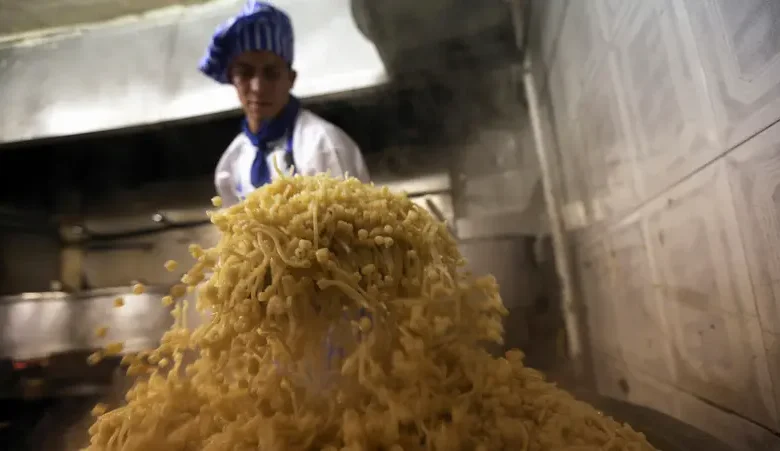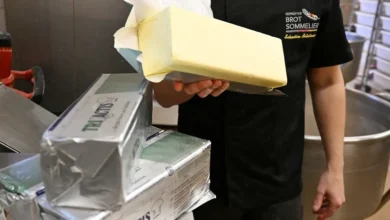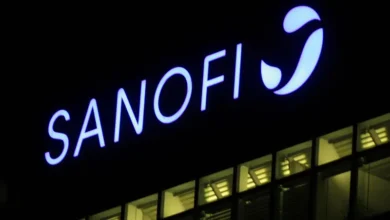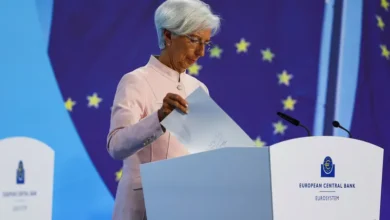Gordon Ramsay’s Egypt street food pick is getting harder to afford

Not even Egypt’s cheap and cheerful national dish, beloved by everyone from street-sweepers to TV chef Gordon Ramsay, is proving immune to the country’s economic turmoil.
Carb-heavy and meat-free, koshary has sustained cash-strapped Egyptians through trying times for decades. The recipe is simple: Take a generous heap of boiled rice, pasta and lentils, top with fried onions and douse in a garlicky tomato sauce with a splash of vinegar.
In the North African country of some 104 million people, this so-called “food of the poor” is served up at ramshackle street-carts, neon-lit fast-food outlets and even in deluxe form at a new fine-dining venue by the Pyramids.
Ramsay expressed his appreciation on Twitter and fellow celebrity chef Anthony Bourdain tucked in during his travel-food show No Reservations.
When protesters took to Cairo’s streets during the 2011 Arab Spring, tubs of koshary kept their sit-ins going. With ingredients that are easy to source and cook, it’s a firm favorite in Egyptian homes.
That simplicity, though, isn’t protecting the dish from Egypt’s fastest rise in consumer prices in more than five years. Bloomberg’s new Koshary Index shows the average price of ingredients for a helping jumped an annual 58.9 percent in December — almost triple the urban inflation rate of 21.3 percent.
The soaring cost of the signature dish encapsulates the most painful knock-on effects of Russia’s invasion of Ukraine.
A major buyer of wheat and other commodities, Egypt’s economy has been battered by higher import bills over the past year.
A string of currency devaluations sought to tackle a foreign-currency crunch, but have helped make many foodstuffs more expensive than ever.
Authorities say tackling consumer prices is a top priority, acknowledging there’s a limit to how much Egyptians can bear. Egypt’s lowest earners typically spend larger proportions of their incomes on food than others in society.
Bloomberg calculated the cost of a single homemade koshary serving by applying the measures in a typical recipe to the average prices for major food items published semi-regularly by Egypt’s state statistics institute.
The index omits some spices and minor ingredients not listed in the reports, and features a fresh tomato topping rather than a commonly used jarred sauce.
Although pasta and cooking oil are among goods the Egyptian state subsidizes for the country’s poorest, other koshary components such as lentils and onions, which have risen 66.5 percent and 27.5 percent respectively in the year to December, are not.
Simple restaurants where less wealthy Egyptians go to enjoy koshary are also feeling the effects, says Youssef Zaki, the owner of Abu Tarek, one of downtown Cairo’s most famed purveyors and where Bourdain visited.
“My profits fell after the ingredient prices rose such a crazy amount,” Zaki, 75, said on a recent weekday afternoon, as customers thronged the three-story eatery that’s located in a working-class district of workshops and outlets selling spare car-parts.
All the same, a medium-size bowl at Abu Tarek has remained mostly unchanged at 30 Egyptian pounds (roughly $1). Helpings in small plastic bags, meanwhile, are a yet-cheaper option popular with school students.
“Koshary is the food of the poor,” said Zaki, who began his career selling it from a street-cart he inherited from his father. “How can I raise prices? People can’t afford it.”










